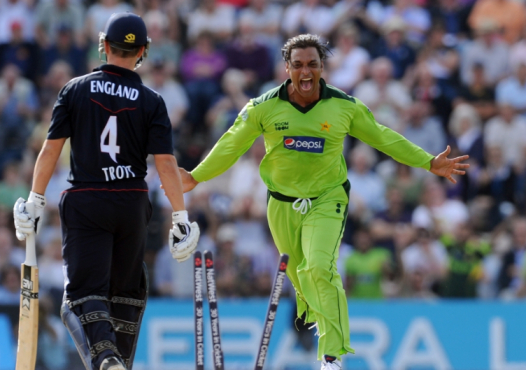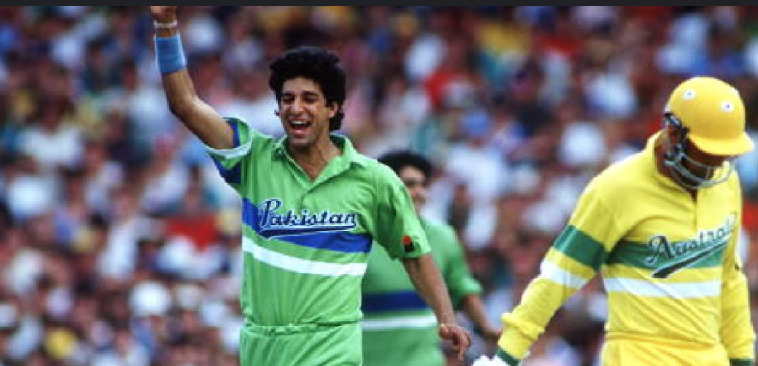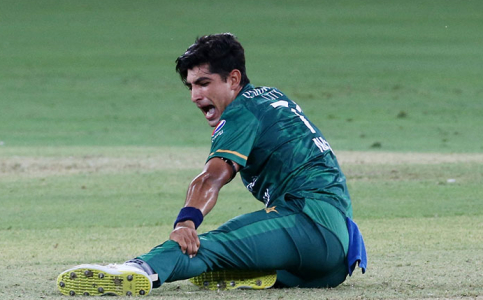For decades, Pakistan’s Fast Bowling attack has been synonymous with fearsome pace a tradition carved by some of the greatest pacers cricket has ever seen. The world would shudder when Pakistan’s fast bowlers stormed the pitch, their raw pace and deadly swing sending shivers down batsmen’s spines. Yet, today, a mysterious decline clouds this once invincible force. What happened to the thunder that once roared from Pakistan’s bowling attack? Let’s unravel this thrilling story.
The Golden Era of Pakistan’s Fast Bowling attack

From the 1970s through the early 2000s, Pakistan’s Fast Bowling attack was a factory of legends. Names like Imran Khan, Wasim Akram, Waqar Younis, and Shoaib Akhtar didn’t just bowl they created magic. Their balls zipped at terrifying speeds, swinging both ways, making batting a nightmare.
Wasim and Waqar’s toe-crushing yorkers, Shoaib Akhtar’s lightning-fast bouncers, and Imran’s relentless accuracy were weapons of mass destruction. The sheer pace, combined with skillful swing, turned matches on their head. Pakistan could defend sub-200 totals simply because their bowlers made the ball “talk” an eerie whisper of fear echoing in every stadium.
What Made Pakistan’s Fast Bowling attack So Unique?

Pakistan’s fast bowlers were products of a special cricketing culture, forming the backbone of Pakistan’s Fast Bowling attack. Born in conditions where raw talent met rugged terrains and endless hours of street cricket, they developed natural rhythm and fearlessness.
- Raw Pace and Fearlessness: Pakistani pacers had an unmatched aggression and fearlessness. Shoaib Akhtar was known as the “Rawalpindi Express,” clocking speeds above 100 mph, something rare in world cricket.
- Mastery of Swing: Wasim and Waqar redefined swing bowling. Their ability to move the ball late made them lethal even on flat pitches.
- Innovative Variations: From toe-crushing yorkers to reverse swing in the later overs, Pakistan’s pace attack was versatile and unpredictable.
- Mentorship Culture: Senior players groomed the juniors. Imran Khan’s leadership instilled a hunger and discipline to succeed.
The Decline: When the Thunder Began to Fade
Fast forward to the modern era, the Pakistan Super League (PSL) 6 showcased an alarming trend. Pakistan’s Fast Bowling attack, once formidable, seemed brittle, struggling to produce the magic of yesteryears. Questions arose: Where did the thunder disappear? Why is Pakistan’s fast bowling losing its edge?
Factors Behind the Decline of Pakistan’s Fast Bowling attack

- Changing Cricket Landscape
Modern cricket has shifted towards batsmen-friendly conditions: shorter boundaries, two new balls, fielding restrictions, and flatter pitches. These factors have made life tougher for fast bowlers globally, but especially for Pakistan’s pacers who traditionally relied on movement and aggression. - Lack of Quality Nurturing and Infrastructure
Unlike the past, Pakistan’s domestic cricket infrastructure and fast bowling coaching have not kept pace. Young fast bowlers often miss out on professional guidance and fitness programs crucial for pace bowling longevity. - Injuries and Fitness Issues
Fast bowling is brutal on the body. Many promising Pakistani pacers have been plagued by injuries. The lack of modern fitness regimes and rehabilitation facilities means bowlers struggle to maintain their peak pace. - Over-Reliance on Spin and Batting in Team Strategy
Pakistani teams of recent times seem to rely more on batting firepower and spinners, sometimes under-utilizing or mismanaging fast bowling resources, especially in T20 formats where death overs demand precision and aggression. - Loss of Fear Factor and Bowling Discipline
Observations from PSL6 highlight senior bowlers bowling careless deliveries like low full tosses and short spells, indicating a dip in discipline and confidence. The fearsome aura of Pakistan’s pace bowlers seems diluted.
The Future: Can Pakistan Rebuild Its Pace Legacy?
Despite these challenges, Pakistan’s Fast Bowling attack still possesses raw talent waiting to explode onto the world stage. Players like Shaheen Afridi and Haris Rauf have shown flashes of the old magic express pace, clever swing, and deadly yorkers. Their performances offer hope that the pace bowling culture can revive with proper nurturing.
What Needs to Change?
- Enhanced Fast Bowling Academies: Pakistan needs world-class academies focusing exclusively on fast bowling development, fitness, and injury management.
- Revamped Domestic Structure: A competitive and fast-bowler friendly domestic cricket setup to groom young pacers.
- Modern Coaching & Analytics: Utilizing sports science, biomechanics, and video analytics to improve skills and tactics.
- Senior Players as Mentors: Veterans must take active roles in guiding youngsters and setting standards of discipline and fitness.
- Cultural Revival: Reignite the pride and aggression that made Pakistan’s pace attack feared worldwide.
Conclusion: The Storm Can Return
Pakistan’s legacy as a land of fast bowling giants is not lost—it is merely waiting to be awakened from a slumber. The ghosts of Imran, Wasim, Waqar, and Shoaib still inspire young cricketers who dream of reviving Pakistan’s Fast Bowling attack and making the ball scream again. The thunder will roll once more, but only if the passion, discipline, and nurturing return in full force. Until then, fans wait with bated breath for the next great fast bowling storm from Pakistan.
READ MORE:

